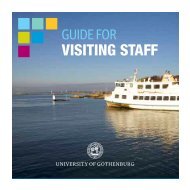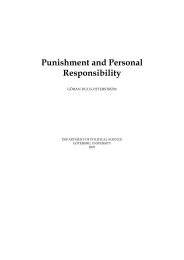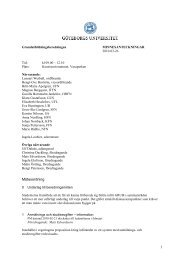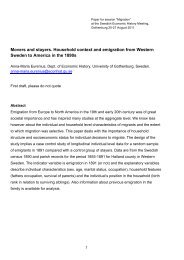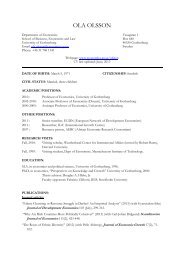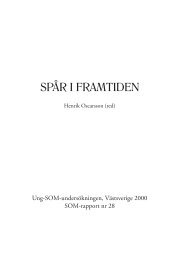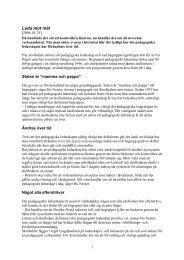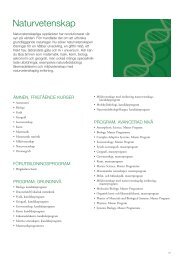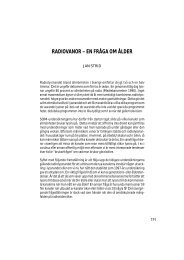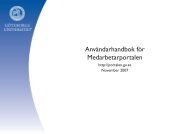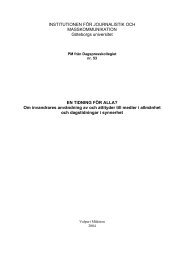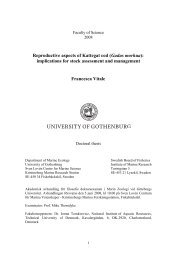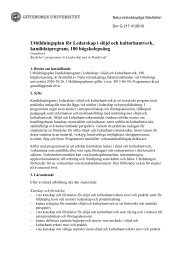development of small-scale intermodal freight transportation in a ...
development of small-scale intermodal freight transportation in a ...
development of small-scale intermodal freight transportation in a ...
Create successful ePaper yourself
Turn your PDF publications into a flip-book with our unique Google optimized e-Paper software.
Europe.<br />
…and from the supply part:<br />
• The ports were situated <strong>in</strong> city centres and could not be expanded to meet the <strong>in</strong>creased<br />
demand on the current sites. The ports <strong>of</strong> the future also needed easy access to large<strong>scale</strong><br />
land <strong>in</strong>frastructure.<br />
• The <strong>in</strong>creased consciousness <strong>of</strong> capital costs also affected the shipp<strong>in</strong>g l<strong>in</strong>es as the<br />
ships became larger and more expensive.<br />
• The manual stevedor<strong>in</strong>g operations <strong>in</strong> ports had become so costly that mechanical<br />
equipment was a prerequisite for expansion. Also transshipment to land modes had to<br />
be made more efficient.<br />
• Temporary engagements <strong>of</strong> many stevedores became troublesome with frequent strikes<br />
etc. The ports also had to compete for workers – a scarcity <strong>in</strong> those days – by <strong>of</strong>fer<strong>in</strong>g<br />
full-time employment with job security.<br />
• Transport technology had reached such a high level as to the facilitation <strong>of</strong> a technological<br />
shift.<br />
• Ships could simply not be built larger with preserved transshipment technology – the<br />
load<strong>in</strong>g-unload<strong>in</strong>g operation <strong>in</strong> the port was a bottleneck and the portion <strong>of</strong> the ships’<br />
stays <strong>in</strong> port would <strong>in</strong>crease. Faster ships would also imply larger part <strong>of</strong> the time spent<br />
<strong>in</strong> ports.<br />
The maritime conta<strong>in</strong>er was found to be the solution to meet the qualitative and quantitative<br />
change <strong>in</strong> transport demand. It was implemented at a fast pace follow<strong>in</strong>g the <strong>in</strong>troduction <strong>in</strong><br />
the 1950’s by Sea-Land under Malcom MCLEAN’s management. With his first generation<br />
<strong>of</strong> conta<strong>in</strong>er ships – modified World War II tankers <strong>in</strong>troduced <strong>in</strong> 1956 – only a restricted<br />
number <strong>of</strong> ports were called and conventional cranes made the conta<strong>in</strong>er handl<strong>in</strong>g an arduous<br />
task. The second generation – <strong>in</strong>troduced <strong>in</strong> 1957 – employed on-board cranes, add<strong>in</strong>g<br />
to cost and limit<strong>in</strong>g stack<strong>in</strong>g volume on deck, but facilitated calls at all ports with equipment<br />
for mov<strong>in</strong>g the conta<strong>in</strong>ers on the quay. First when many ports had <strong>in</strong>vested <strong>in</strong> gantry<br />
cranes <strong>in</strong> the late 1960’s the time was ready to <strong>in</strong>troduce conta<strong>in</strong>er ships as we know them<br />
today.<br />
9



